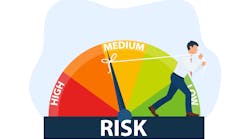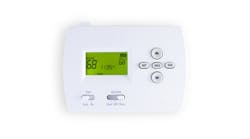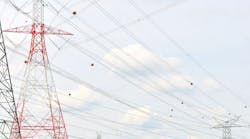Extreme weather conditions have been impacting much of the United States, clearly evident through the many headlines they’ve made just in the past year or so. In February 2021, Texas experienced a winter storm like never before, setting record lows in temperature across most of the state.
The Southern cold snap drove near unprecedented demand for electricity, which most businesses and residents rely on for heat. Most existing electric heating systems become less efficient in colder conditions, and because of the rarity of cold winters in states like Texas, the buildings and systems often are not well insulated or "winterized."
Texas' grid operator, ERCOT, initiated rolling outages to prevent system collapse — the normal response to tight grid conditions. However, the forced generation outages were so severe that operators shut off power for many customers for more than 24 hours. As many Texan households do not have sufficient insulation, millions of people suffered near freezing, life-threatening indoor conditions. The situation was further compounded by frozen and broken pipes.
Power plants, in particular, failed to perform at the level expected by grid planners, as both electric demand and forced outages greatly exceeded ERCOT's pre-winter resource assessment. Natural gas is the primary electricity source in the state and was expected to provide as much as two-thirds of electric capacity in such conditions. However, as much as 40% of natural gas capacity was not available. The storm also illuminated the interdependence between the gas and power sectors.
Texas was hit particularly hard, relative to climate norms, and climate change concerns are only worsening. Climate is expected to produce increasingly cold winters, fueling future reliability concerns, while at the same time leading to extremely hot summer months. This puts increasing pressure on utilities, states, and regulators to quantify the risks, develop short- and long-term mitigation strategies, and, more importantly, develop a climate adaptation framework.
Which assets and which hazards?
An important first step in assessing risk associated with climate-related hazards is identifying vulnerable assets and associated hazards. A widely used framework for examining vulnerability of assets considers exposure, sensitivity, and adaptive capacity.
The exposure component seeks to capture the spatial extent to which an increased degree of hazard overlaps with the asset under examination (for example, the overlap of sea-level rise with assets located along the shoreline). Sensitivity represents the susceptibility of an asset to damage when exposed to a climate-related hazard (for example, the susceptibility of overhead electric power lines to damage in high winds). Adaptive capacity is the flexibility to take adaptive measures to mitigate or avoid the impacts of exposure (for example, the de-energization of overhead electric power lines during extreme fire hazard conditions).
Risk assessment and mitigation for a changing climate
Climate-related hazards have increased pressure on utilities to account for the health of their assets. Over the medium- and long-term, stakeholders expect utilities to harden or adapt assets in response to climate-related hazards. This may include the addition of power generating capacity to supplement an electric gird during extreme events like the recent cold snap. Over the short-term, stakeholders expect utilities to make sure their assets are not part of the problem. For example, utilities may decide to de-energize particularly vulnerable overhead electric power lines during extreme fire hazard conditions.
Both asset management and operability assessment decisions require utilities to assess, quantify, and communicate risk associated with climate-related hazards. Hardening assets should be prioritized to optimize risk reduction, and risk "thresholds" should be established to determine when a power line is de-energized. These types of decisions are most clearly communicated to stakeholders when the risk reduction associated with the action can be quantified. The traditional method of qualitatively expressing risk in a matrix format is not conducive to differentiating among many possible mitigation tactics involving a myriad of distributed assets and when answering the question, "What was the benefit of the mitigation action?"
A changing climate for quantitative risk-based methods
Increasingly, utilities are recognizing the benefits of a quantitative risk-based framework for asset management and operability assessment when tackling these difficult decisions. Methods for quantifying risk to infrastructure have been used in some industries for many decades, such as risk associated with structural damage to a nuclear reactor during an earthquake. These methods are less common for utilities operating and managing distributed assets because of the sheer number of assets involved, and because asset management has traditionally been driven by regulatory requirements. Recent developments in data analytics and an increased focus on risk by regulators have diminished these impediments to a quantitative risk-based approach for utilities.
One useful tool in quantifying climate-related risk for utilities is a fragility curve, which expresses the probability of asset failure when subject to a particular hazard level (for example, temperature). These curves allow asset managers and operators to assess the current health of their assets and quantify the probability of failure during an extreme weather event or the annualized probability of failure over the life of the asset. This provides a consistent metric for comparing risk across asset classes and for quantifying the benefits of risk reduction.
Know your risks (and quantify them!)
By using fragility curves, asset managers and facility owners can translate hazards to damage done. This can be done for multiple hazards and across various portfolios of assets — from utility structures, tank farms, or petrochemical plants. This forward-looking, quantitative understanding of the evolving risks at the facility level can inform engineering and economic decisions to bolster resilience for both existing facilities and proposed projects. For existing facilities, this quantitative understanding of the risks can inform short-term operational readiness, including operation procedures, emergency response, and post-event recovery, and long-term capital planning, including risk vulnerability analyses, structural hardening, and insurance. For proposed projects, such understanding can inform site selection, engineering design, regulatory compliance, and insurance during the project development phase.
While extreme weather events such as cold snaps cannot be prevented, asset managers and facility owners can quantify the risk that cold snaps pose to their infrastructure and be better prepared to tackle climate-related hazards in the future.


